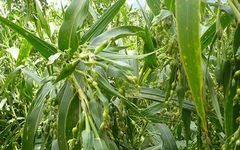


Coix (Yi Yi Ren) is propagated by seeds. Generally, the occurrence of black smut disease is severe, so seed treatment is necessary before sowing. First, remove diseased, shriveled, and immature seeds through seed selection, and then treat the healthy seeds as follows: Seed soaking with medication: Place seeds in a cloth bag and soak in 5% lime milk or 1:1:120 Bordeaux mixture for 24-48 hours, then rinse with clean water twice before sowing. Seed dressing: Use benomyl seed dressing agent for seed treatment. Hot water treatment: Soak seeds in cold water for 12 hours, then transfer to boiling water for 8-10 seconds, immediately remove and spread to cool, and sow after drying the surface moisture of the seeds.
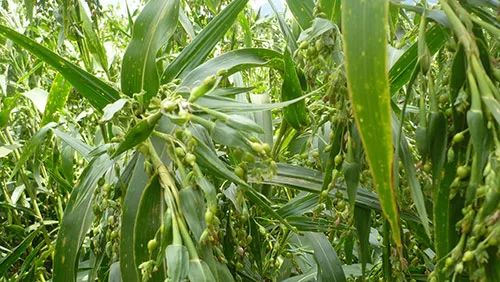

Coix has strong adaptability and can be planted in both wet and dry fields, but it grows best in sunny, fertile loam or clay loam. Suitable planting locations include sunny spots along ditches, rivers, streams, and fields, as well as flat areas in hills and slopes. It can also be planted in rice paddies that are convenient for drainage and irrigation. After harvesting the previous crop, till the soil promptly; till to a depth of 20-25 cm, and apply 2000-2500 kg of well-rotted organic fertilizer and 50 kg of nitrogen, phosphorus, and potassium compound fertilizer per mu. Level the soil and prepare 1.5-2 m wide flat beds, with the length depending on the terrain, and wait for sowing.

Coix seeds are primarily sown directly, which can be divided into spring and summer sowing. Spring sowing is suitable in mid to late April when the soil temperature at a depth of 5 cm is stable above 15°C; summer sowing occurs after the harvest of rapeseed or wheat. Due to the short growth period and small plant size, an appropriate increase in density is recommended.
Direct sowing: Generally, row sowing or hole sowing is used, with hole sowing being preferable for ventilation and light penetration, and less prone to lodging. Hole sowing method: Space rows 50 cm apart, with holes (plants) spaced 40-45 cm apart, placing 6-10 seeds per hole, and covering with about 3 cm of soil; at around 20°C, seedlings emerge in 15 days, and do not water before emergence. For hole sowing, use 5 kg of seeds per mu. Currently, large-scale planting can utilize mechanical sowing machines.

(1) Cultivation, Weeding, and Thinning
After emergence, loosen the soil frequently, cultivate, and weed while minimizing watering to promote seedling establishment; if too dry, water appropriately; perform 2-3 cultivations and weeding before the plants close rows. The third cultivation should be combined with weeding to mound soil to prevent lodging. When seedlings are 7-10 cm tall or have 3-4 true leaves, thinning should be done, keeping the strong and removing the weak, keeping 4-6 plants per hole, and promptly replanting any gaps.
(2) Fertilization and Irrigation
Generally, one fertilization is applied for annual Coix. Fertilization should use a ternary compound fertilizer or mixed fertilizer, with a dosage of 40-50 kg per mu, applied in furrows before the plants close rows, followed by timely irrigation. During the flowering period, ensure adequate watering to keep the soil moist; otherwise, many shriveled grains will result in low yield. Pay attention to timely drainage in case of water accumulation.
(3) Manual Pollination Assistance
Coix is a monoecious plant with distinct male and female flowers, and it is wind-pollinated. The male flowers in the same inflorescence mature first, often requiring cross-pollination from other plants. If pollination of female flowers is poor during flowering, it can lead to white grains or empty shells. Manual pollination assistance is a key measure to improve the seed setting rate and increase yield. This should be done on sunny days from 10 am to 12 pm during the peak flowering period. Two people should walk along the rows, pulling a rope to shake the stems, allowing pollen to disperse. Manual pollination can be performed every 3-5 days during the flowering period.
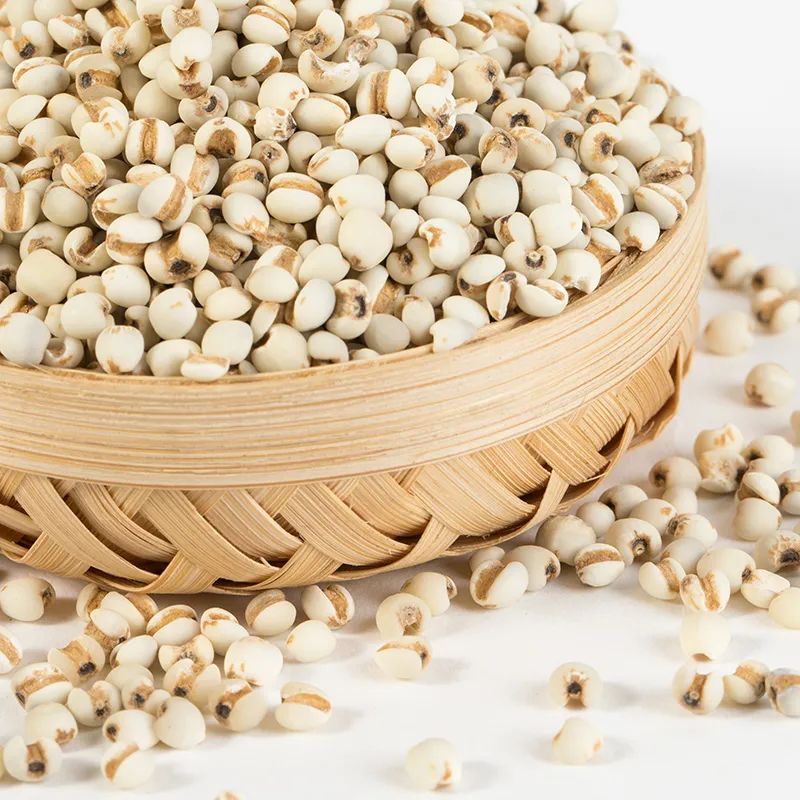

Coix is primarily affected by diseases such as black smut and leaf blight. In the production of vegetables, fruits, and tea, the following measures are often adopted for pest control and damage reduction: (1) Black Smut
① Pathogen and Symptoms: Belongs to the Basidiomycota, Coix black smut fungus. It mainly harms the inflorescence but can also invade leaves and sheaths. Infected plants do not show symptoms during the seedling stage, but after 10 leaves, purple-red tumor-like protrusions appear on the upper tender leaves and sheaths. In severe cases, the leaves twist, and the protrusions dry out and turn brown, containing black spores; when the inflorescence is affected, the ovaries swell, initially purple-red, then dark brown, larger than normal fruits, and the ovary wall is hard to rupture, filled with black spores. Each growth point of the main stem and tillers of infected plants becomes a black smut pustule, and the grains turn into galls. The fungus overwinters on seeds or in the soil. In the following spring, when the soil temperature rises to 10-18°C and the soil moisture is appropriate, it can invade the young shoots of Coix, and as the plant grows, it rises to the inflorescence, causing tissue damage and turning into black smut. When the small black pustules on the black smut burst, they release black-brown powder, which is spread by wind and rain to healthy seeds or falls into the soil, causing disease in the following year. Continuous planting or failure to deep plow the fields increases the risk of disease.
② Control Methods: ★ Agricultural Control: Establish disease-free seed fields and conduct regular inspections; immediately remove and burn infected plants; apply fully decomposed organic fertilizers, balanced fertilization, and reasonable micro-fertilizer supplementation, along with promoting the use of biological fertilizers to enhance disease resistance; implement a 3-year crop rotation in heavily infected fields, avoiding rotation with gramineous crops; during seed selection, prioritize plant selection before grain selection, discarding seeds infected with black smut.
★ Scientific Chemical Control: Pre-sowing seed treatment can use 3.5% Mancozeb (1% metalaxyl + 2.5% carbendazim) seed dressing agent (seed-to-agent ratio 1:1000), or 30% prothioconazole suspension seed dressing agent. Mixing with the plant resistance inducer chitosan (5% amino-oligosaccharide) at a dilution of 800 times is even better.
(2) Leaf Blight
① Pathogen and Symptoms: Belongs to the Ascomycota, Coix leaf blight fungus. It mainly harms leaves and sheaths, causing small yellow spots that are oval, spindle-shaped, or elongated, light brown, with darker edges, and later develop a black mold layer. Usually, the lower old leaves are affected first, gradually spreading to the upper leaves. When there are many leaf spots, they can merge, leading to leaf death. This disease is severe during the rainy season.
② Control Methods: ★ Agricultural Control: After harvesting Coix, concentrate and burn diseased plants; rotate with non-grass crops; select disease-resistant dwarf varieties and unify sowing dates; practice reasonable planting density, ensuring ventilation and light; strengthen field management, balanced fertilization, and increase the application of well-rotted organic fertilizers, along with promoting the use of biological fertilizers to enhance disease resistance. ★ Scientific Chemical Control: Timely control at the initial stage of the disease can use 42% oligosaccharide-sulfur suspension at a dilution of 600 times, or plant resistance inducer chitosan (5% amino-oligosaccharide) at a dilution of 1000 times + 10% prothioconazole emulsion at a dilution of 1000 times (or 80% manganese-zinc complex wettable powder at a dilution of 1000 times, 75% oxathiin + tebuconazole water dispersible granules at a dilution of 2000 times, 25% pyraclostrobin suspension at a dilution of 1500 times, etc.) for spray control. Spray every 7-10 days, for 2-3 consecutive times.
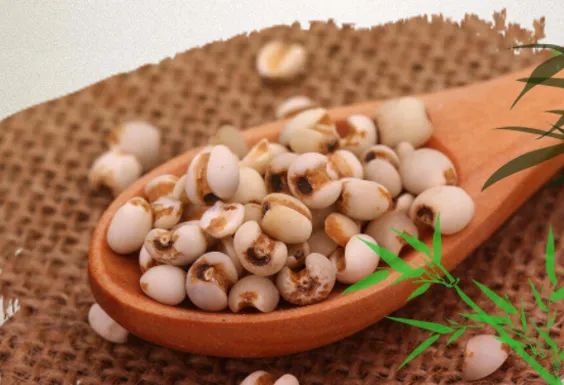
Coix is primarily affected by pests such as the corn borer and armyworm. In the production of vegetables, fruits, and tea, the following measures are often adopted for pest control and damage reduction: (1) Corn Borer
Belongs to the order Lepidoptera, family Crambidae. ① Damage Symptoms: 1-2 instar larvae burrow into the heart leaves of seedlings, feeding on leaf tissue or the midrib, often leaving a row of neat small holes. 2-3 instar larvae burrow into the stem, causing hollowing and lodging, leading to white ears even if not broken. Mature larvae overwinter in the stems of Coix or corn. There are 2-4 generations per year, with overlapping generations. The third generation in August-September causes the most damage to Coix. Some larvae pupate inside the Coix stems. Eggs are laid near the midrib on the underside of leaves.
② Control Methods: ★ Agricultural Control: In early spring, before the corn borer emerges, concentrate and compost corn and Coix stalks to eliminate overwintering larvae; strengthen inspections of the heart leaves of plants and promptly remove and destroy infested seedlings.
★ Physical Control: Utilize insect traps on a large scale to catch adults before they lay eggs.
★ Biological Control: Use pheromone traps to catch male moths before mating. Spray with a biological agent containing 100 billion spores of Bt at a dilution of 300-500 times, or 0.36% matrine water solution at a dilution of 800 times, or 2.5% chlorantraniliprole suspension at a dilution of 1500 times for control. ★ Scientific Chemical Control: Timely spraying before larvae burrow can use 5% emamectin benzoate emulsion at a dilution of 2000 times, or 10% chlorantraniliprole dispersible suspension at a dilution of 2000 times, or 20% chlorantraniliprole suspension at a dilution of 1000 times, or 16% abamectin + indoxacarb (4% abamectin + 12% indoxacarb) suspension at a dilution of 3000 times for spray control.
(2) Armyworm
Belongs to the order Lepidoptera, family Noctuidae. ① Damage Symptoms: Armyworms are migratory pests that can cause significant damage in a short time due to their gregarious feeding behavior, often completely defoliating crops. In China, they can occur 2-8 generations per year, with the Hebei province experiencing 3 generations, primarily affecting corn. They often migrate into Coix planting areas and cause damage.
② Control Methods: ★ Biological Control: Use pheromone traps on a large scale to catch male moths before mating. During the early larval stage, before they spread, timely use insect growth regulators for control to reduce pollution and protect natural enemies.
★ Scientific Chemical Control: Timely control during the early larval stage, preferably using 5% fluazifop-p-butyl emulsion at a dilution of 50-75 ml, or 20% insect growth regulator at a dilution of 10 ml, or 25% chlorantraniliprole suspension at a dilution of 30-40 ml for spray control, maximizing the protection of natural enemy resources and beneficial insects.
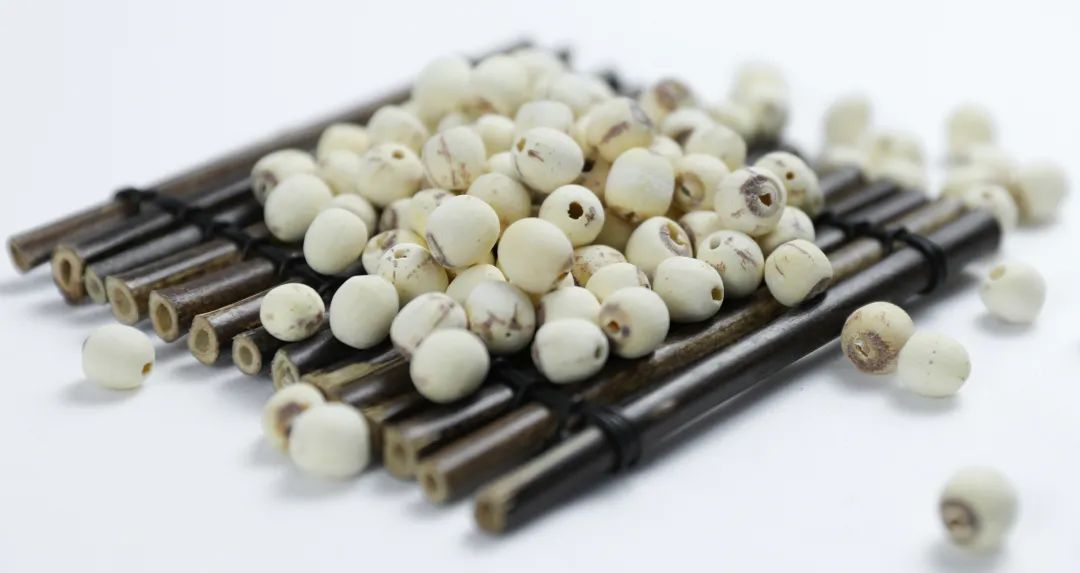

At the end of September to October, when the stems and leaves turn yellow and 80% of the fruits are light brown or yellow, choose a sunny day to cut the stalks with ears. The harvested stalks should be concentrated and stood for 3-4 days before threshing, allowing the not fully matured seeds to continue to fill. Use a thresher to thresh, using a screen with a larger diameter than Coix to remove broken leaves and impurities, and blow away empty shells and shriveled grains. Choose sunny weather to spread Coix on a clean drying area. When spreading, rake Coix into a wave shape, with a thickness not exceeding 5 cm, turning every 1-2 hours to remove broken shells, shriveled grains, and other impurities. Use a dehulling machine to remove the outer shell, obtaining white, shiny Coix seeds, and blow away the shell, yellow seed coat, dust, and debris.


